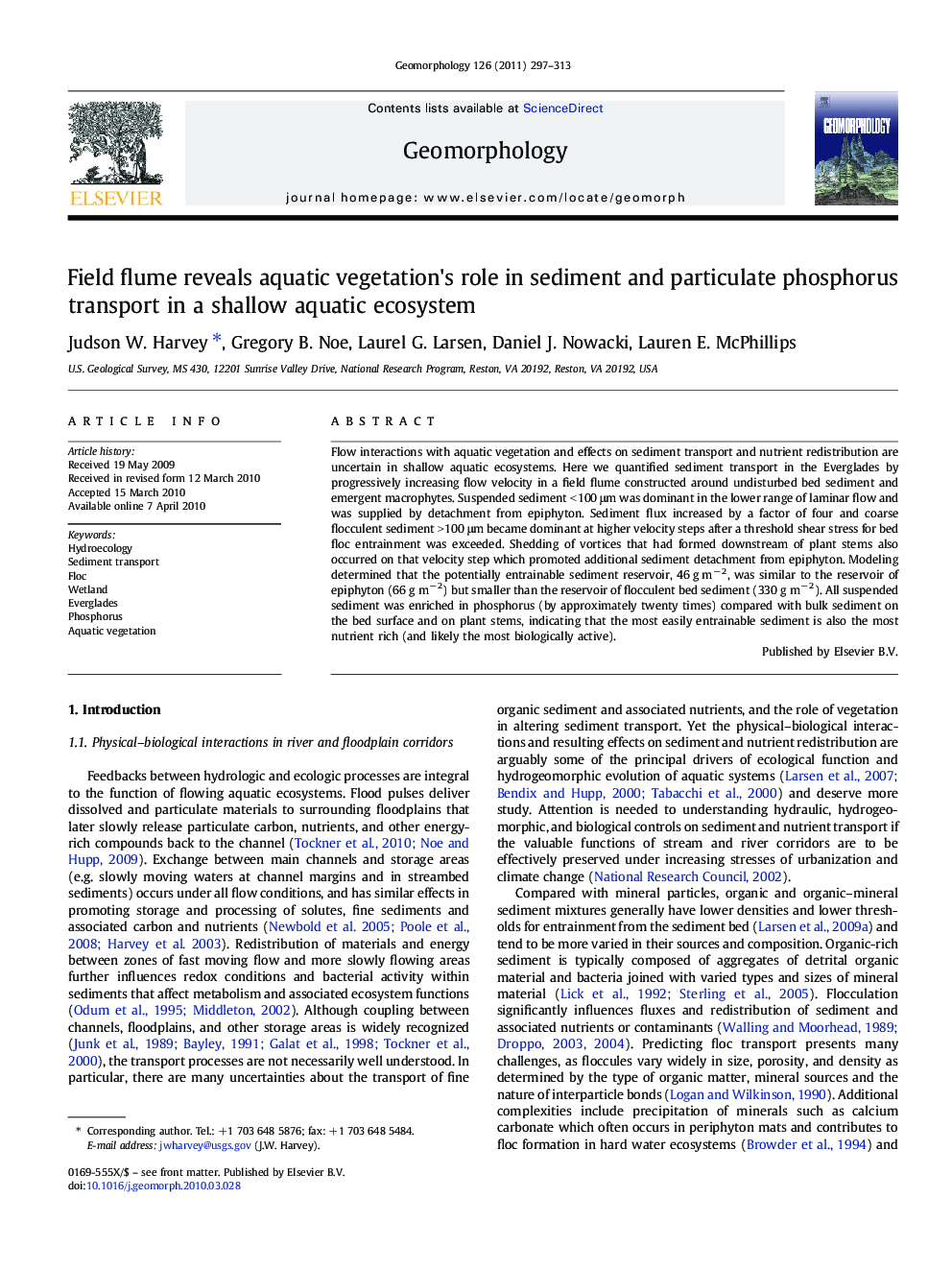| Article ID | Journal | Published Year | Pages | File Type |
|---|---|---|---|---|
| 4685805 | Geomorphology | 2011 | 17 Pages |
Flow interactions with aquatic vegetation and effects on sediment transport and nutrient redistribution are uncertain in shallow aquatic ecosystems. Here we quantified sediment transport in the Everglades by progressively increasing flow velocity in a field flume constructed around undisturbed bed sediment and emergent macrophytes. Suspended sediment < 100 μm was dominant in the lower range of laminar flow and was supplied by detachment from epiphyton. Sediment flux increased by a factor of four and coarse flocculent sediment > 100 μm became dominant at higher velocity steps after a threshold shear stress for bed floc entrainment was exceeded. Shedding of vortices that had formed downstream of plant stems also occurred on that velocity step which promoted additional sediment detachment from epiphyton. Modeling determined that the potentially entrainable sediment reservoir, 46 g m− 2, was similar to the reservoir of epiphyton (66 g m− 2) but smaller than the reservoir of flocculent bed sediment (330 g m− 2). All suspended sediment was enriched in phosphorus (by approximately twenty times) compared with bulk sediment on the bed surface and on plant stems, indicating that the most easily entrainable sediment is also the most nutrient rich (and likely the most biologically active).
